Native advertising, my friends, is the dark horse of digital marketing. It's got this uncanny knack for standing out while blending in, like a chameleon on a rainbow. It's not just effective, it's a game-changer, leaving traditional online ads eating their dust.
Why so effective, you ask? Here's the secret sauce: native ads are crafted to complement the content they're nestled in, making them less intrusive and more engaging. They're like the charming guest at a party who effortlessly mingles and becomes everyone's favorite.
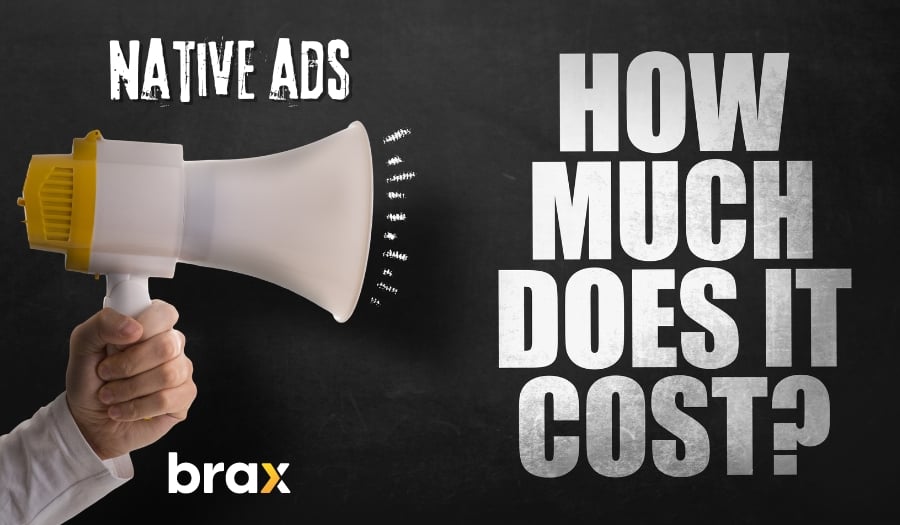
This ability helps them leap over that pesky hurdle we call 'banner blindness'.
The evidence is clear and unmistakable — native ads don't just talk the talk, they walk the walk, driving a 9% improvement in brand affinity compared to banner ads. And get this, they're shared 32 percent more often than display ads!
But like any marketing strategy, native advertising isn't a stroll in the park. It requires a financial commitment. Yes, it offers sophisticated targeting and higher engagement rates, but remember, there's no such thing as a free lunch.
So, before you strap on your goggles and take a plunge into the native advertising pool, take a moment to do some budgeting. And that's what we're going to help you out with today by answering the very important question: how much does native advertising cost?
The Different Types of Native Ads Cost Structures
The cost structure is the heart and soul of understanding the costs associated with native advertising.
Why, you ask? Well, it's simple. It’s like knowing the rules of the game before you play. You wouldn't enter a poker tournament without knowing the value of a full house, right?
Native ads operate on a programmatic bidding model. It's a digital auction, where you're bidding for ad space in real time and the highest bidder gets the prime spot.
It all happens when an ad spot opens up, like when a user visits a webpage where the ad will be displayed. The programmatic platform will run a very fast auction, calling all prospective bidders to show their best offers.

The advertiser with the best offer wins, his ad is then shown, and he pays for the ad spot based on the winning bid. Everything happens in a split second that the user will not even notice it.
It's a dynamic, competitive marketplace. It's actually not as complicated as it sounds, and you won't even have to be present every single time an ad spot opens up — all you need to do is leave a bid.
Two Main Bidding Models for Native Ads
Bidding models in digital advertising refer to the method of buying ad space on various platforms. It determines how you pay the publisher and the platform for winning the ad spot.
While there are several of them out there, there are only two main choices for those who use native ads.
1. CPC
Cost per Click, or CPC, as the cool kids in digital advertising call it, isn't a fresh-faced newcomer. This performance-based pricing model has been around the block and has gained popularity for its knack for boosting ROI for native ads.
So, why are advertisers head over heels for CPC?
Well, they only have to part with their cash when someone clicks on their ad (hence the name cost per click) — a pretty cost-effective method to usher traffic toward their website.
It's like having a VIP pass to control your ad expenses while ensuring that the user actually visits your landing page to see what you have to offer.
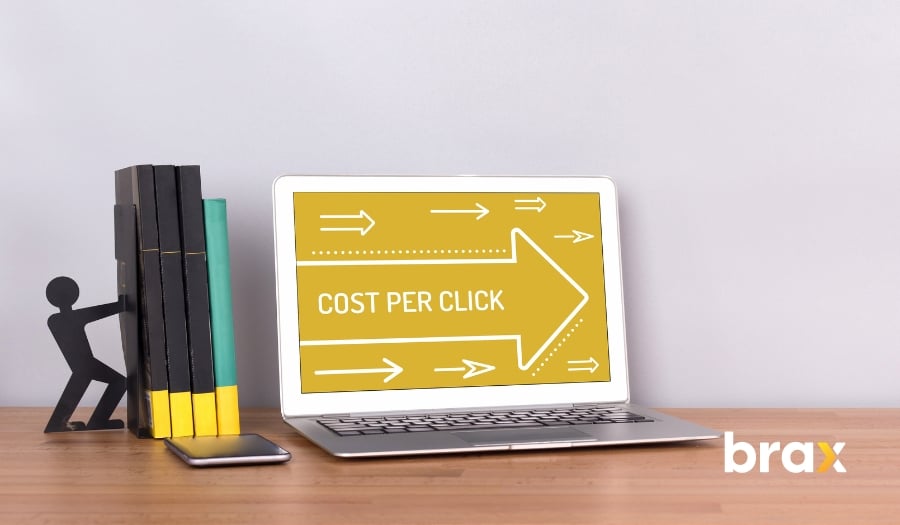
But the party doesn't stop there. With CPC, advertisers can fine-tune their ads' relevance, pump up click-through rates, and, the cherry on top, drive conversions.
Native Ads CPC Rates:
CPC rates can go as low as $0.001 to as high as $0.50 per click, depending on the location and native ad network.
2. CPM
In the world of digital marketing, CPM is a term that is constantly thrown around.
CPM or cost per mille, simply put, charges advertisers for every thousand impressions that their ad receives.
An impression is counted when an ad is shown on a page, sometimes even when the ad is not yet in view.
This pricing method offers a number of advantages for native ads. Firstly, it is cheaper than its counterpart, the CPC.
Why? Because you are not assured of a result (like a click). But if you create a good ad and target audiences better, there's a good chance you'll get a good ROI using this bidding model.
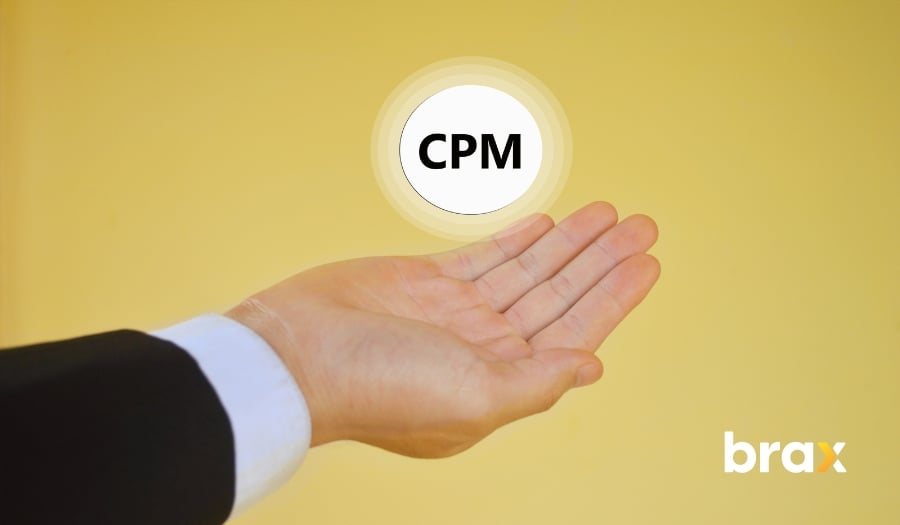
Secondly, it allows companies that are focusing on brand awareness to spread information about themselves even without the need for the user to click.
So if you already have your target audience narrowed down and engaged, CPM is your best bet.
Native Ads CPM Rates:
CPM rates can go as low as $0.10 to as high as $5.00 per thousand views, again, depending on the location and native ad network.
Factors that Affect Native Advertising Cost
Native advertisement prices can swing wildly from one business to the next.
As an advertiser, you may find this variability both intriguing and frustrating. It's like trying to hit a moving target while blindfolded.
Ntive advertisements' ability to blend seamlessly into the user's browsing experience can work wonders for engagement and conversions. But the question that keeps you up at night is, "Why does the cost vary so much?"
Here are some factors to consider:
1. Ad Placement
Think of native advertising as prime real estate in the digital neighborhood. High-traffic placements might come with a heftier price tag, but they're like billboards on a busy highway — more visibility and a higher chance of clicks.
This means if you can choose the websites where your native ads appear, it would be best to start with lower-priced tiers and move up from there as you gain more budget for ads.
Buying ads from highly popular websites will almost always guarantee high costs.
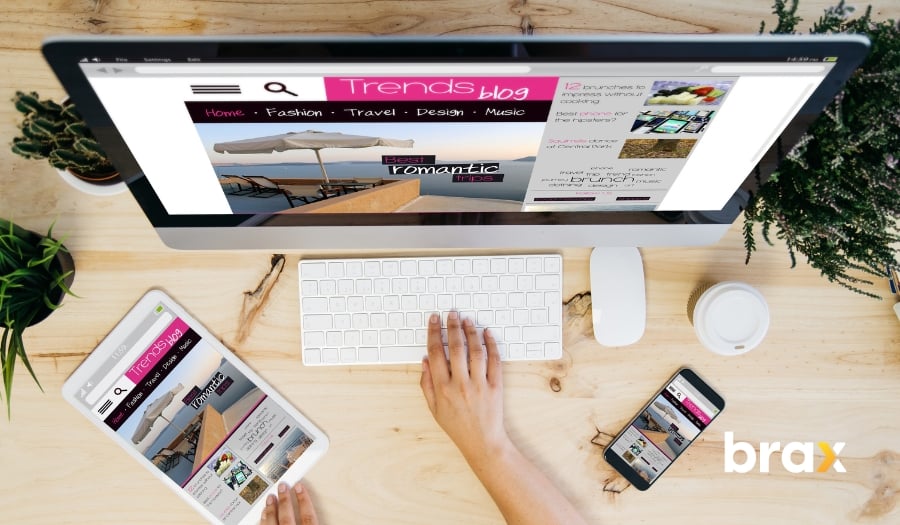
2. Ad Content / Creative
This is the heart and soul of your ad. High-quality, relevant content is like a compelling conversation — it draws people in and keeps them engaged.
If your ad resonates with your audience, you're looking at higher engagement rates and better cost efficiency.
If your audiences are not responding to your ads, then it's best to test ad variations. This way, you can narrow down to creatives that resonate with your audiences, essentially leading to better results.
3. Landing Page Quality
So, here's the scoop: the landing page is where your ad sends people. And let me tell you, its quality is a big deal when it comes to the cost of your native ads.
A top-notch, user-friendly page not only makes users happier but also boosts engagement and conversions.
When users stumble upon a page that matches the ad, looks awesome, and is a breeze to navigate, they're more likely to stick around, get involved, and get things done.
On the flip side, a crummy page that's totally off from the ad or a maze to navigate will make people bounce like rubber balls, jacking up your ad costs without a decent return on investment.
And here's an important fact: some native advertising platforms even consider landing page quality when deciding how much to charge you for ad placement.
They're all about those pages that bring value and follow the rules, you know?
So a great landing page sometimes equals less advertising spends.
4. Audience Targeting
Audience targeting is a key component in any native advertising campaign, especially in native advertising. It involves defining who your ad is for, based on various factors such as demographics, interests, behaviors, and more.
A well-defined audience targeting strategy can lead to more efficient ad spend, as the ads are displayed to those who are more likely to engage with them.
When it comes to native ads, a loosely targeted advertising campaign can lead to higher costs in the long run.
This happens because, without precise targeting, your ads may be served to individuals who have little to no interest in your product or service, leading to fewer engagements and conversions.
This inefficient use of your ad budget results in a higher cost per action (CPA), lowering your overall return on ad spend (ROAS).
Remember, in the realm of native advertising, precision is power. The more accurately you can target your audience, the better your chances of achieving your campaign goals efficiently and cost-effectively.
5. Competition
Imagine the native advertising space is a bustling marketplace, a digital bazaar teeming with stalls (or ads, if you will) jostling for the attention of potential customers.
Now, the more stalls there are selling the same kind of items (read: ads targeting the same audience), the more cutthroat the competition becomes.
The result? Prices for the best spots to set up your stall (read: ad placement costs) skyrocket faster than a cat video goes viral.
That's right, in the world of native ads, competition is as intense as a reality show finale. The more advertisers vying for the same target audience, the higher the cost of advertising.

6. Industry
Just like in the real world, some industries face steeper costs. Sectors such as technology, finance, and healthcare often witness higher advertising costs due to the potential for high customer lifetime values (CLV).
Let's take technology, for example. A tech company selling enterprise software solutions may find that a single conversion could lead to a highly lucrative, long-term contract, thereby justifying the higher ad spend.
Similarly, in the finance sector, companies like banks and insurance firms are willing to invest more in advertising because securing a customer can represent a substantial financial gain over many years.
On the other hand, industries like healthcare and pharmaceuticals face stringent regulations and rigorous scrutiny, which can pose additional challenges and drive up native advertising costs.
For instance, pharmaceutical companies must comply with regulations pertaining to disclosure and transparency in advertising, making the ad creation process more complex and expensive.
In essence, industries with high CLV or regulatory hurdles can witness steeper advertising costs, making the ad space a competitive and costly arena.
So, while you're strategizing your native advertising budget, remember to take into account the industry norms and peculiarities.
7. Geolocation (Country, Province/State, City)
Geolocation targeting is a key player in the game of native advertising cost. Think of it as the GPS of your advertising strategy. W
ant to target a country, state, city, or even neighborhood? You've got it.
But here's the kicker: your native advertising cost can vary significantly depending on where they appear.
In essence, more desirable (or competitive) locations typically come with higher advertising costs. Factors such as audience size, the purchasing power of the demographic, and the prevalence of competing businesses all play a part in determining these costs.
Rest assured, with this level of targeting, you can make your ads more effective and reach the right audience, all while understanding the influence of location on your advertising investment.
Imagine a fashion brand trying to promote its winter collection in Florida through native advertising. Winter in this state is like a mild breeze compared to the icy tundra elsewhere. So, guess what? Advertising costs might actually be lower because, let's face it, not many people are rushing to buy heavy winter coats in the Sunshine State.
But if this fashion brand decides to focus on a place like New York, where winter can really pack a punch, you better believe the cost is gonna skyrocket. This is because many other brands are likely also advertising winter clothing, leading to a highly competitive market.
Furthermore, the high demand for winter clothing in New York implies that users are more likely to engage with the ads, making it a more desirable location for businesses. Thus, the geolocation of the users — Florida vs. New York, in this case — can have a significant effect on the cost of the native ad campaign.
But remember, it's not just about being seen, it's about being seen by the right people.
So, when plotting your geolocation strategy, be sure to strike a balance between audience relevance and cost-effectiveness for your native ads.
8. Campaign Management (or Mismanagement)
In the world of native advertising, ignorance is definitely not bliss; it's an express ticket to skyrocketing costs.
Let's break it down. You've got this neat native advertising campaign running, but if you're not monitoring and adjusting it regularly, you're essentially throwing your budget into the abyss.
Without proper management, tracking, and optimization, you can't really tell whether your ad resonates with your audience, or if it's just fading into the digital background noise.
Moreover, without regular monitoring, you might miss crucial trends or shifts in your audience's behavior. This lack of insight can lead to poor decision-making, causing you to push ads that are no longer relevant or effective, which only serves to inflate your costs further.
In short, don't let your ads stray into the wild without a leash. Stay on top of your campaign management, and make data-driven decisions to keep your costs down and your ROI flying high.
The answer to this problem is simple: you need a reliable guide, and that's where ad management tools like Brax come into play.
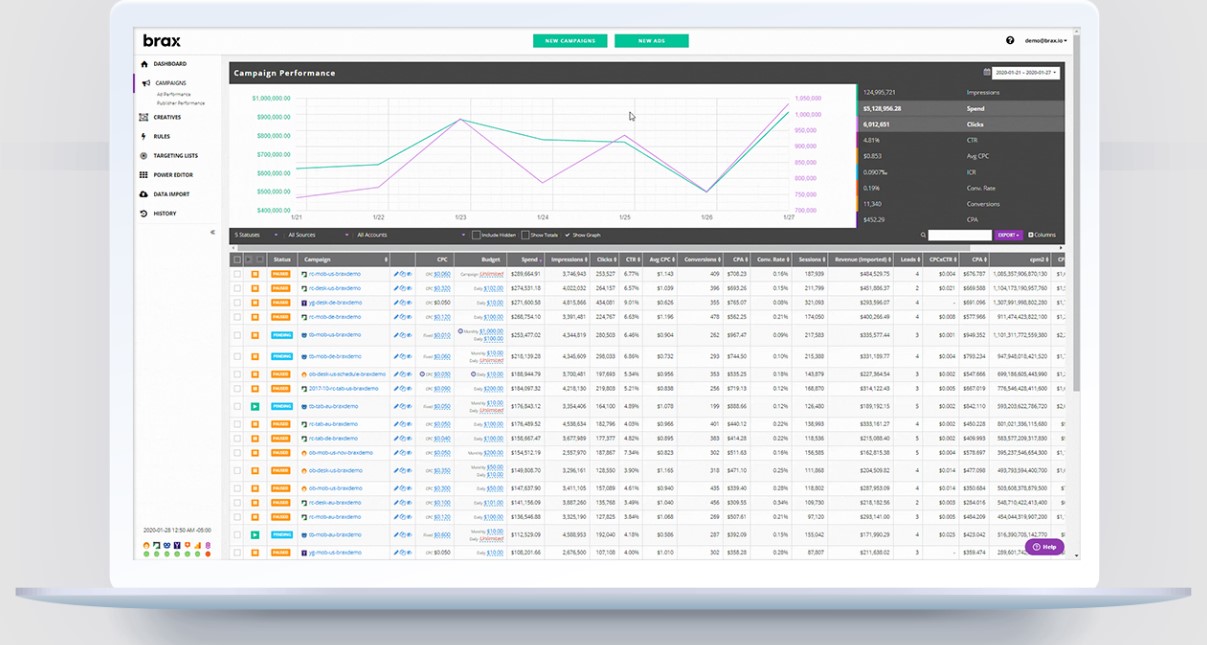
Brax, the seasoned Sherpa of the advertising world, offers a raft of features that make native ad management a breeze. It's your one-stop shop for controlling, scaling, and optimizing your native ad campaigns across multiple platforms.
Let's take a sneak peek into what your journey with Brax might look like.
First off, there's the powerful Bulk Ad Creation and Editing feature. Imagine you could clone yourself to get more work done. That's essentially what this feature does — but for your ads. It's like having an army of mini-yous, creating and tweaking ads at warp speed, freeing up your time for other crucial tasks.
Next, we've got Unified Reporting. This feature is like a magical crystal ball, giving you a clear view of your performance across all platforms in one location. It helps you identify what's working (hooray!) and what's not (uh-oh...), so you can make informed decisions on the fly.
Then there's Rule-Based Optimization. Think of it as your automated system that stops sources that aren't delivering the results you expect and bidding more on sources that send engaged customers.
Remember, in the jungle of native advertising, only the fittest, the most adaptative, and well-managed campaigns survive — and thrive. If you'd like to see Brax in action, book a free demo today.
How Much Budget Should You Prepare for Native Advertising
We did mention that the costs of native ads vary according to multiple factors.
But if you're just starting out with a native ad campaign and want to learn how much you should prepare at the start of your journey, we suggest preparing at least $500 a month.
If you have a higher budget, even better! Just don't forget to invest in tools that are essential for native ad campaign management, like Brax.
With this kind of budget, there are a few native advertising networks that stand out as beginner-friendly and cost-effective:
- Taboola: A popular choice for marketers, Taboola is known for its straightforward interface, making it easy for beginners to navigate. While setting a budget, you can opt for cost-per-click (CPC) bidding, allowing for greater control over ad spend.
- Outbrain: Outbrain is another user-friendly native ads network suitable for beginners. It offers a range of targeting options, including geolocation, device, and context, which can help manage costs and maximize ad performance.
- Revcontent: Revcontent often has lower cost-per-mille (CPM) rates, making it a suitable choice for a smaller budget. While it may not have the reach of Taboola or Outbrain, Revcontent's granular targeting and lower costs can be a great starting point for beginners.
- MGID: MGID offers a flexible payment model where you can choose between CPC and CPM, which can help manage your budget. The platform also offers strong customer support that can guide beginners through the process.
Remember, the platform you choose should align with your marketing objectives and target audience. As you grow more comfortable with native advertising, you may choose to explore other networks or increase your budget to maximize your reach and ROI.
All of these recommended advertising networks can be managed within Brax.
To Sum Up...
While your concern about native advertising costs is valid, I believe your biggest concern should be not reaching your audience! Native ads is second to social media ads when it comes to ad effectiveness, but it is definitely a lot cheaper.
You can sidestep the issue of rising native advertising costs by being a bit like a ninja, identifying and targeting niche audience segments less crowded with competitors. You might also consider improving the quality of your ad content, making it so irresistible that it stands out in the cluttered marketplace.
And of course, proper ad monitoring is key to success. Get a 14-day free trial with Brax if you sign up through this link.
Remember, in this digital bazaar, the most magnetic stall is often the one that ends up making the most sales, regardless of its location. So, roll up your sleeves, put your creative hat on, and prepare to take the native advertising marketplace by storm!

